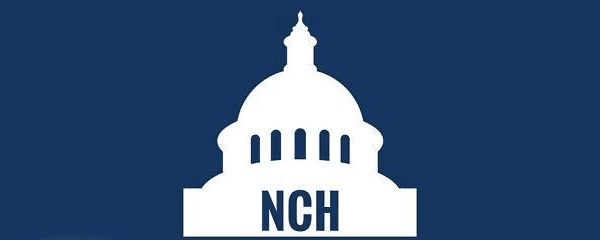Legislation Introduced to Nullify Bush Executive Order
In last month’s column, “Executive Orders: Exchanging the Old for the New” (Perspectives, April 2003), we reported on the status of the judicial and legislative efforts to overturn President Bush’s Executive Order (EO) 13233, which had established new policies and procedures for the release of presidential records under the provisions of the Presidential Records Act. This month we report a major new development.
On March 27, 2003, Rep. Doug Ose (R-Calif.), along with a bipartisan group of seven other members of the House Committee on Government Reform, introduced legislation (H.R. 1493) that revokes President George Bush’s Executive Order 13233 of November 2001.
This is one of the shortest and simplest bills on record—under 100 words:
Be it enacted by the Senate and House of Representatives of the United States of America in Congress assembled, Section 1. Revocation of Executive Order of November 1, 2001. Executive Order number 13233, dated November 1, 2001 (66 Fed. Reg. 56025), shall have no force or effect, and Executive Order number 12667, dated January 18, 1989 (54 Reg. 3403) shall apply by its terms.
In his floor statement introducing the bill, Ose stated that the Bush EO “is inconsistent both with the Presidential Records Act itself and with NARA’s codified implementing regulations.” Furthermore, he said, it “violates not only the spirit but also the letter of the Presidential Records Act. It undercuts the public’s rights to be fully informed about how its government operated in the past. My bill would restore the public’s right to know and its confidence in our government.”
Legislation (HR. 4187)—the “Presidential Records Act Amendments of 2002″—was introduced in the 107th Congress by Rep. Steve Horn (R-Calif.), who has since retired. Ose was an original cosponsor of the Horn measure. Last year, the Government Reform Committee held several hearings on the Bush EO and on October 9, 2002, the committee reported an amended version of this bill (see House Rept. 107-790). The session ended, however, before the full House could act on the measure.
In contrast to Horn’s proposed legislation, which tried to rectify only some aspects of the Bush EO, Ose’s bill seeks to nullify the entire EO—a solution preferred by many historians and archivists. Under the auspices of the National Coalition for History, a strategy meeting of representatives of organizations with a particular interest in this legislation is scheduled for late April. Hearings on the pending legislation have yet to be announced.
Restriction on Clinton Pardon Data Upheld
A federal judge upheld the Bush administration’s claims of secrecy for the records of former President Bill Clinton’s pardons issued by the outgoing president on his last day in office. In a 14-page decision, U.S. District Court Judge Gladys Kessler ruled in favor of the Justice Department and against Judicial Watch, a legal watchdog group that had sought access to almost 5,000 pages of pardon-related papers and confidential communications.
On Clinton’s last day in office he issued 177 pardons and commutations of sentences, an act that created a public uproar. Judicial Watch filed suit to obtain the background documentation. To the consternation of several members of Congress, the Bush White House backed Clinton’s desire to keep his confidential communication records secret as pro vided by provisions in the Presidential Records Act (PRA). In court, Bush’s attorneys argued that a president’s pardon authority is “a core presidential power exclusively entrusted to, and exercised by, the president himself, and the documents generated in the process of developing and providing advice to him are squarely subject to the privilege.”
In her decision Judge Kessler ruled that in the case of the pardons the “presidential communications privilege” (a subset of executive privilege) applied, and that President Bush’s lawyers were justified in seeking to shield the release of such information from the public. According to Kessler, “The presidential communications privilege serves as a vitally important protection for the institution,” thus allowing presidential advisers to give the fullest and most candid advice they can on sensitive issues.
Though Clinton recently waived his right to restrict access to most of the papers reflecting the confidential advice he received during his administration, thus allowing historians and other scholars to gain access to the records within a few years rather than the statutory 12 years, the former president did not authorize the release of the pardon papers. They may, however, come up for reconsideration under provisions of the PRA in a few years.
Legislation Introduced
World Trade Center National Memorial Act
On March 19, 2003, Rep. Jerrold Nadler (D-N.Y.) introduced legislation—the “World Trade Center National Memorial Act” (H.R. 1364)—designed to establish a national memorial at or in the proximate vicinity of the World Trade Center site in New York to commemorate the tragic events of September 11, 2001. While state and local New York City authorities have taken the lead in planning the overall development of the World Trade Center site, this bill seeks to establish a “World Trade Center Memorial Advisory Board”—a group of experts who would assist the Lower Manhattan Development Corporation in a public planning process that ultimately would result in a memorial administered as a unit of the National Park Service. The bill was referred to the House Committee on Resources for action.
National Parks Institute
On March 13, 2003, Rep. George Radanovich (R-Calif.) introduced legislation (H.R. 1289) to establish a National Parks Institute at the University of California at Merced. The institute is designed to assist the National Park Service (NPS) in the promotion of conservation stewardship, to develop and pro mote sustainable resource management programs, and to assist developing nations to manage their natural and cultural resources. The legislation empowers the federal government to construct a facility to house the program on university grounds and to enter into cooperative agreements with various entities carry out provisions of the act. As envisioned by the bill sponsor, the institute would be jointly administered by the NPS and UC Merced. The bill was jointly referred to the House Education and Workforce Committee and the House Committee on Resources.
Restoring Freedom of Information
On March 12, 2003, Senators Patrick Leahy (D-Vt.), Carl Levin (D-Mich.), James Jeffords (Ind.-Vt.), Joseph Lieberman (D-Ct.), and Robert Byrd (D-W.Va.) introduced legislation (S. 609)—the “Restoration of Freedom of Information Act (FOIA) of 2003″—that would replace the broad exemption for “critical infrastructure information” presently included in the charter for the new Department of Homeland Security. According to the bill’s sponsors, the legislation embodies the compromise that senators Leahy, Levin, and other reached with the White House during the Senate’s earlier work on the homeland security bill.
The bill is designed to protect Americans’ “right to know” while simultaneously contributing to the security of the nation’s critical infrastructure. The bill would limit the FOIA exemption to relevant “records” submitted by private entities so that only those records that actually pertain to critical infrastructure safety are protected. The bill also seeks not to limit the use of such information by the government, except to prohibit disclosure where such information is appropriately exempted under FOIA. It also seeks to protect the actions of legitimate whistle-blowers, rather than criminalizing their acts. The measure does not forbid use of such information in civil court cases to hold companies account able for wrongdoing or to protect the public. Another provision seeks to respect, rather than preempt, state and local FOIA laws. The bill was referred to the Senate Judiciary Committee for consideration.
Missing Bill of Rights Copy Recovered
On March 19, 2003, FBI agents conducted a sting operation in Philadelphia and reclaimed North Carolina’s original copy of the Bill of Rights from individuals who were trying to sell it to a Philadelphia-based museum. The document was one of 14 handwritten original copies of the Bill of Rights known to exist. The copies were penned by the clerks to the first House of Representatives and the Senate and signed by Senate Secretary Samuel A. Otis, House Clerk John Beckley, House Speaker Frederick Augustus Muhlenberg, and Vice President John Adams. The document has an interesting history. As a condition of ratifying the new federal Constitution, several states demanded copies of the new Bill of Rights that had been adopted in 1789. Congress agreed to send each of the original 13 states a copy, the federal government retaining one copy. For 76 years, the North Carolina copy was preserved in the statehouse. In 1865, during the American Civil War, a Union soldier marching south through North Carolina with General William T. Sherman’s army is believed to have taken it to his home in Tippecanoe, Ohio. The soldier apparently sold it in 1866. For the next 135 years the document was in the hands of private collectors and was periodically offered for sale, with one owner or another often trying to sell it back to North Carolina, but always through intermediaries.
The document most recently turned up in 2000 when individuals, accompanied by armed bodyguards, visited the offices of the George Washington University’s First Federal Congress Project to authenticate the document. Though initially it was unclear which state copy was being presented for authentication, the First Federal Congress Project research staff determined that it was the missing North Carolina copy. The project staff found that six of the original states no longer their copies—two had been burned, two were in the possession of the Library of Congress, and one was held by the New York Public Library. Through the process of elimination and through docketing information and handwriting analysis there was little doubt that the document being offered for sale to the National Constitution Center (a museum soon to be opened in Philadelphia) for $4 million (probably a tenth of its true value) was the North Carolina copy. Federal authorities became involved, and replevin laws kicked in once the National Constitution Center officials contacted state officials and the FBI. The document is now expected to be returned to the state of North Carolina. An elated North Carolina Governor Mike Basely (D) told the Associated Press, “It is a historic document, and its return is a historic occasion.”
Federal authorities are now weighing whether to bring criminal charges against those who were trying to sell the document. The case is complex and by no means clear-cut. Proving criminality in the sale of government documents is rarely an easy task, especially if they were taken during wartime and an attorney could assert that the document was a “spoil of war.” The outcome will probably rest on whether federal prosecuting authorities can determine if the seller had “criminal intent” and whether he knew the documents had been stolen. While North Carolina officials refused at least twice to negotiate with the seller, most recently in 1995, not because they considered it “stolen” but because they considered the millions of dollars sought for it was merely “ransom money.” Should the attorney for the present owner argue that the document was a “spoil of war,” the federal prosecution could get awkward.
National Archives AAD System Now Operational
On February 12, 2003, the National Archives and Records Administration (NARA) opened the Access to Archival Databases (AAD) system to the public. AAD provides researchers with online access to over 50 million historical electronic records organized in over 350 databases that were created by some 20 federal agencies. The long-term plan calls for the program to be expanded to over 500 databases. The AAD system is the first publicly accessible application developed under the auspices of the Electronic Records Archives (ERA) Program. The ERA program seeks to address the challenges of preserving and increasing the variety and volume of government records that have been created and stored in electronic form. AAD enables researchers to search, retrieve, download, and print out records. Researchers will need to determine in advance the series and file units of interest before initiating their research.

